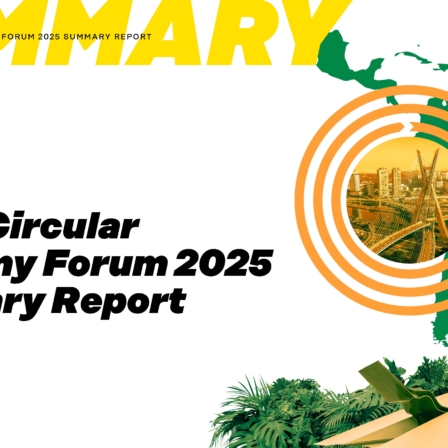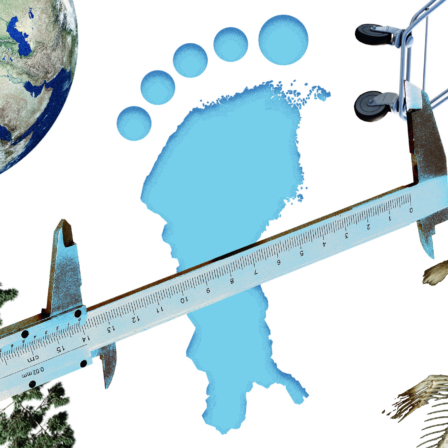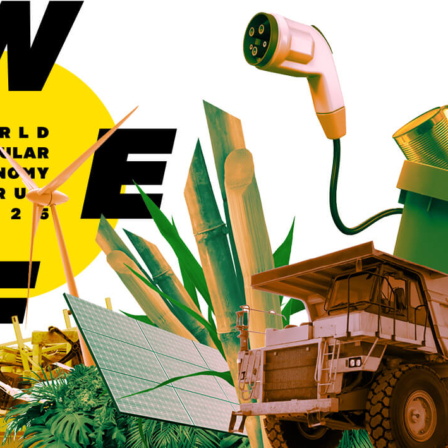The Commission released its new European Circular Economy Action Plan for a cleaner and more competitive Europe on 11 March. By focusing on the design phase of products and production, in combination with regulatory and market measures and increasing consumer power, the action plan seeks to move us towards our destination: systemic change Systemic change Systemic change refers to the simultaneous reform of operational models, structures and their interactions, which are used to create the prerequisites for future welfare and sustainable development. Open term page Systemic change . The new strategy contains many positive new elements, not least taking on the global dimension of the circular economy and seeking to ensure an inclusive and socially just transition.
In order for the action plan to deliver, the devil is in the detail. This is especially true when it comes to the implementation of new product design requirements and the “right to repair” – an element of the strategy we applaud. Synchronisation with chemicals and waste legislation, as well as industrial, trade and development policy, will be key. In addition, much more attention should be given to understanding and mitigating the potential negative energy and material use impacts of digitisation – which we are counting on as a key enabler of the circular economy transition.
The Circular Economy Action Plan is a key tool under the European Green Deal. We welcome the Commission’s new plan and would like to highlight six points that we intend to focus on during the upcoming years at Sitra.
- Absolute decoupling and sustainable lifestyles in Europe. We need to set a target for reducing our material/consumption footprint in order to send a strong signal to producers, consumers and policymakers.
There is currently no target – one should be added. Moving towards relative as well as absolute decoupling Decoupling Separating events, conditions, circumstances or situations that have previously been linked, so that they can be realised independently of each other. For example, the decoupling of well-being and economic growth from the consumption of natural resources. Open term page Decoupling will guide us towards sustainable lifestyles based on values that transcend material consumption.
- Digitisation as an enabler of the circular economy.. Innovation, the fourth industrial revolution (4IR), digitisation and servicification act as key enablers for the circular economy transition. The European Circular Economy Data Space and electronic product passports will bring life-cycle assessment and traceability across value chains to a new level. New circular business models will shift consumption away from ownership. However, there are also elements of digitisation that accelerate climate change and reduce biodiversity. These include the increasing use of energy and natural resources, and, therefore, we need a better understanding of the systemic effects of digitisation and to find means to drive development in a sustainable direction.
- Product design at the core of the circular economy. Further development of EU product policy towards circularity is crucial, since most products’ environmental impact is determined in the upstream phase. Under the action plan, only safe, circular and sustainable products will be allowed onto the European market by 2030. Europe needs to leverage both the single market and trade policy, working with like-minded trading partners, to become the standard-setter for circular production and consumption across global value chains. At the next World Circular Economy Forum in Toronto in September 2020, Sitra will be exploring – with our Canadian and global partners – specific ways to make the Comprehensive Economic and Trade Agreement with Canada (CETA) support the circular economy transition.
- Aligning industrial strategy with climate and circular economy objectives. By applying circular principles, the EU could reduce its emissions from resource-intensive industries, including steel, plastics, aluminium and cement production, by 56% by 2050. By enhancing material recirculation, production and material efficiency and applying new circular business models, the reduction is achievable. It is of utmost importance that the new European Industrial Strategy is aligned with climate and circular economy objectives, since half of the CO2 emissions and 90 per cent of biodiversity loss and water stress comes from the extraction and processing of materials (IRP 2019: Global Resources Outlook 2019). We need to start moving towards a regenerative economy.
- Right to repair. The future of consumption will be revolutionised by European “right to repair” legislation coupled with targeted economic incentive measures, including reform of environmentally harmful subsidies and a shift in taxation away from services and towards materials/goods. In addition to emissions cuts, environmental tax reforms can be used to enhance circular economy solutions. While material and energy efficiency are part and parcel of the business logic in the production of capital goods, when it comes to consumer goods linearity and planned obsolescence are still the dominant models. Right to repair legislation will be important in turning around that logic, opening up the business space for new service providers and designed-to-last products. The right to repair proposal is a way to facilitate smarter consumption habits and make repairing and longer life cycles of products common.
- A just transition. Ensuring that no one is left behind is critical to the implementation of the action plan. The plan spells out valuable ways to enhance lifelong learning opportunities and provide regional support to the most significantly impacted sectors and areas. Sitra will be facilitating dialogue on the social and employment impacts of the circular economy transition across countries, regions and internationally, drawing on experiences in Finland. Changing production and consumption patterns will have impacts globally, and developing countries need to be fully integrated into new sustainable global value chains based on the circular economy. Sitra, together with the Finnish Ministry of Foreign Affairs and the African Development Bank, will be supporting African countries in drawing up their own circular economy road maps, identifying their own strengths, priorities and support needs from their development partners to enable them to become circular.
+1 Last but not least. If one point were to be added to the action plan today, our vote would be for an EU-wide deposit-refund requirement for glass, plastic and aluminium bottles and cans. Deposit-refund systems are efficient and cost-effective and have worked for decades in the Nordic countries. In addition, the system has served as a source of inspiration for new business models. For example, tractor manufacturer Valtra has created a deposit-refund system allowing the remanufacturing of gearboxes, extending their life cycles and saving energy and materials – a system that is very profitable. Deposit-refund systems are too good to overlook!



















Recommended
Have some more.